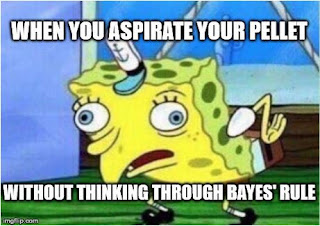3 Lessons Ligands Taught Me
I have never considered myself a great communicator or
technical writer (spoilers: I still don’t). However, something about the
journey of collecting my own data and interpreting it in a meaningful way helped
me pick up a couple of tricks that I hope to use in my future scientific and
scholarly writing.
As a matter of fact, ligands may not have given me
significant data, but they did give me significant life lessons:
1. Resources are your best friends.
Mendeley, Excel, PowerPoint,
PubMed, ChemDraw… Believe it or not, that isn’t a list of my favorite Koch Café
sandwiches. That is a list of just some of the resources that helped make my
research findings presentable and cohesive.
Surprisingly, it turns out that some
of the hardest aspects of the Data Summary for me were making line graphs look
clean, being consistent with colors across figures, lining up panels, and
writing proper citations. These tasks weren’t hard in the sense that they
required a lot of critical thinking and looking, like the hefty data interpretation
did, but they were hard because they required a lot of time and considerable
maneuvering through tools I had been previously unfamiliar with.
Thus, one of the most productive
preparative steps I would advise all researchers to do, including future me, is
getting comfortable with citation- and figure-generating accessories, so that
you spend your time more efficiently and make your paper more digestible to
readers.
Not knowing how to remove minor
axes from your bar graph because you are not familiar with Excel formatting
features just adds frustration and subtracts productivity from your work
schedule.
2. Data has a voice of its own.
When diving into data analysis,
don’t go in with any assumptions. Leave all hypotheses at the door. Let the
data speak to you.
What I mean by this is although
raw data can sometimes be overwhelming and it is commonplace to start data
analysis with a preconceived notion of what you want to see out of it, I found
it more productive to graph and ask questions later.
A general process that worked for
me was first making an admittedly cluttered graph with all my data, treating
the graph as an image on a paper I was trying to critique, and asking myself what
conclusions or trends was the data making glaringly obvious to me.
Even when your data isn’t
statistically significant, it can serve as significant insight into something
you might want to focus on in future experiments or into a pattern or trend you
can try to understand.
3. What would [insert awesome 20.109 professor
name here] do?
Something I struggle with when I
take on any new endeavor is feeling unqualified and thus shrinking from the
task at hand. I get intimidated and frustrated and don’t necessarily produce my
best work.
I definitely got flustered in the
beginning of this assignment, feeling like I didn’t know where to start or how
to crank out quality material. When
you’ve never written a research paper or presented scientific data before, it
can be hard to grasp the big picture of what you want to accomplish in
assignments like the Data Summary.
Something I used to do in high
school a lot when test taking was putting myself in the shoes of the test
creators or graders. What did they want me to get out of this exam? What were
they looking for in the answers? In this assignment, whenever I got stuck or
was confused, it helped me to think about what my 20.109 instructors, and in
general a scientifically literate audience, would want to read.
With that being said, congratulations to everyone for making it through Mod1 and ahead we charge towards Mod2!


Comments
Post a Comment